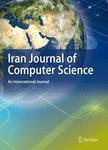版权所有:内蒙古大学图书馆 技术提供:维普资讯• 智图
内蒙古自治区呼和浩特市赛罕区大学西街235号 邮编: 010021

作者机构:Centre for Image Processing and Pattern Recognition Mepco Schlenk Engineering College Tamil Nadu Sivakasi India
出 版 物:《Iran Journal of Computer Science》 (Iran J Comput Sci)
年 卷 期:2025年第8卷第2期
页 面:553-569页
主 题:CASIA database Convolutional neural network (CNN) Local binary pattern (LBP) Penta-modal Penta-modal Score-level fusion
摘 要:Recent advancements in biometric security systems, which are designed to reliably verify an individual’s identity, have garnered significant attention in the fields of security and access control. However, traditional unimodal biometric systems encounter several challenges, including intra-class variability, vulnerability to spoofing, and noise interference, which can undermine their effectiveness. To overcome these limitations, this study introduces a novel penta-modal biometric recognition system that integrates five distinct biometric traits: iris, fingerprint, palm print, ear, and face. The proposed system employs a weighted similarity approach, utilizing Local Binary Pattern (LBP) feature maps that are extracted from query images using a Convolutional Neural Network (CNN). These extracted features are then compared against enrolled templates stored in a database. The operation of the system follows a structured five-step process: (1) pre-processing of biometric data, (2) extraction and classification of LBP feature maps via CNN, (3) score computation for each biometric modality, (4) weighted score-level fusion, and (5) final authentication. The performance of the penta-modal biometric system was rigorously evaluated using various public benchmark datasets, including CASIA-FingerprintV5, CASIA-FaceV5, CASIA-PalmprintV1, CASIA-Iris-V3, the AMI ear dataset, and the MEPCO multimodal dataset, as well as synthetically generated multimodal databases. The system achieved an impressive accuracy rate of 99.85% on the virtual databases, demonstrating significantly enhanced security and reliability compared to traditional unimodal systems. © The Author(s), under exclusive licence to Springer Nature Switzerland AG 2025.